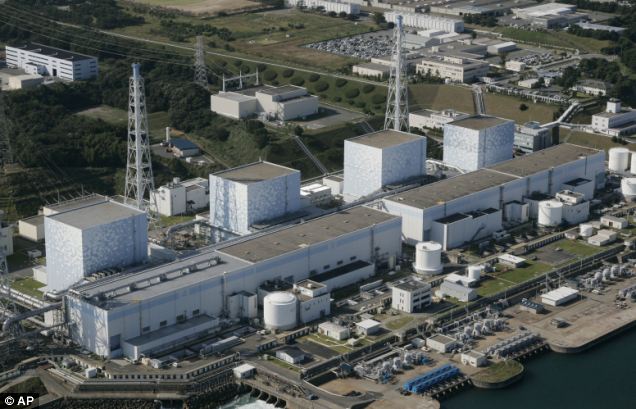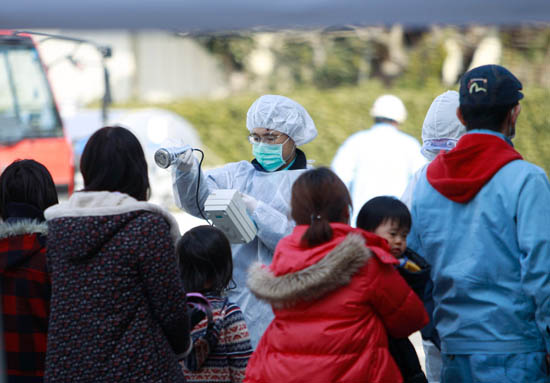Solution to prevent nuclear disaster
The ability to prevent the spread of wide-area radioactivity at Japan's nuclear power plant depends very much on the luck and the timeliness of the intervention.

The No. 3 reactor of the Fukushima Daiichi nuclear power plant before the explosion onMarch 14.Photo: AP .
The fastest solution to the reactors of Fukushima Daiichi nuclear power plant (also known as Fukushima I) is to power their cooling systems, Time said. This leads to the funny fact that power plants cannot power themselves.
The difficulty of the plant began when the terrible earthquake on March 11 caused power outages at the factory, and the backup generators failed because the tsunami drowned. Kenneth Bergeron, a physicist from the Sandia National Laboratory in the US, says the probability that both a nuclear power's primary and secondary power systems would be destroyed is so low that only a few statisticians think it can happen. Yet it happened at the Fukushima Daiichi factory.
The electricity lost so the reactors 1, 2 and 3 could not pump enough water to cool the fuel rods at the core. Therefore, the plant management is forced to pump seawater into the furnace, despite the risk of seawater corroding parts and making the reactors unusable. The most effective solution is to recover power generators at the factory or deliver generators to the factory. External generators must be strong enough to pump water into the furnace at high speed and in large quantities to cool the furnace.
The difficulty of people lies in whether the ability to avoid disaster depends on the luck and the timeliness of the intervention. Japan Nuclear Safety Agency announced, they discovered Cesium 127 radioactive material outside the factory. The presence of Cesium 127 is evidence that the reactor core is in a state of overheating , even if it only takes a few seconds. Radiation leaks out when the core rises above the surface of the water and becomes too hot. That process must take 20 to 50 minutes, and the Cesium 127 can spread.

Health workers check radiation in the body of a resident in Koriyama City, Fukushima Prefecture on March 13.
When the reactor core becomes too hot, it will produce many by-products, including hydrogen gas . This gas is produced when zirconium (used to wrap the fuel rods) causes a chemical reaction with water vapor under the catalyst of heat. Experts believe that the combination of hydrogen gas inside the furnace with oxygen outside causes an explosion of reactors No.1 and 3.
Subsequent developments depend on whether the reactor is supplied with sufficient cooling water and the rate of heat reduction of the fuel rods. After an earthquake occurs, the reactor stops working and therefore the fuel walls also begin to cool down. But after a few days they cooled to a safe level. New fuel rods lose heat faster than older bars. The bad news is that the Fukushima Daiichi plant reactors have been in operation for several decades and the number one 'aging' reactor is so dead that it will cease operation in March.
In case the heat of the fuel rods remains high and they continue to rise higher than the water surface, they will melt . If the melting phenomenon is not detected in time, nuclear fuel will spill down and destroy the floor of the storage tank. Then the radioactive material spreads to the outside environment.
Even if the reactor receives enough water when the fuel rods melt, the water's ability to cool the fuel rods also decreases significantly. So the fuel continued to flow down, destroying the floor of the tank and spreading it into the environment.
- VN nuclear power before Japanese nuclear disaster
- Lessons from Japanese nuclear disaster
- How to survive the nuclear disaster
- Photos of 30 years of disaster Chernobyl nuclear power plant
- Looking back on 2 years of Fukushima nuclear disaster
- A wake-up call from 'artificial disaster' Fukushima
- Nuclear disaster can happen at any time
- Japan restarted nuclear power after the Fukushima disaster
- New discovery of the Chernobyl nuclear disaster effect
- The safest place on earth to avoid nuclear disaster
- Inheritance of impenetrable nucleus underground
- Disaster management, the need to learn
 Vietnam 5th Asian champion on fuel-efficient vehicles
Vietnam 5th Asian champion on fuel-efficient vehicles We can read all NASA studies completely free of charge
We can read all NASA studies completely free of charge Singer and songwriter Bob Dylan won the 2016 Nobel Prize for Literature
Singer and songwriter Bob Dylan won the 2016 Nobel Prize for Literature Scientific revolution in Asia
Scientific revolution in Asia